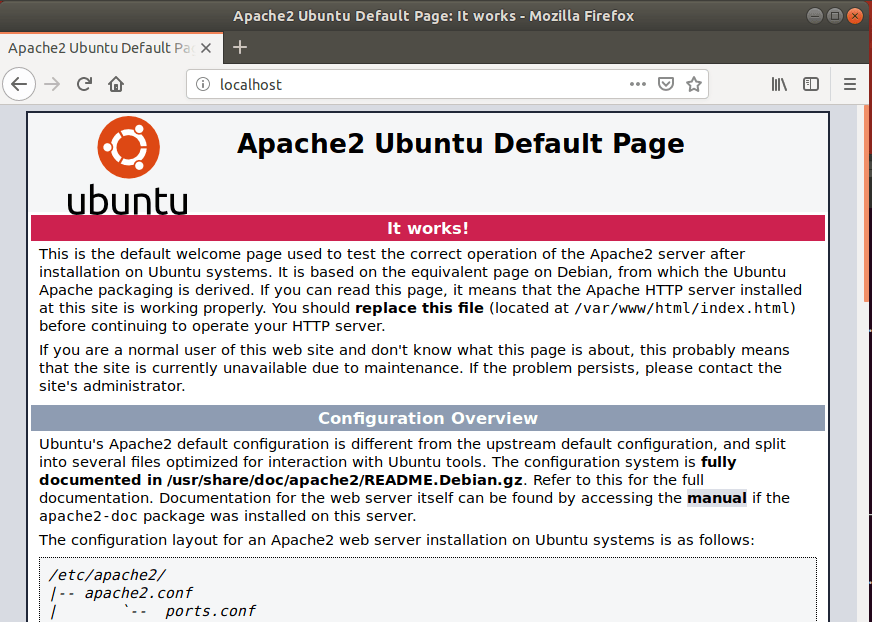eduTrac is an open-source, student information system that helps you build and manage online courses for students, teachers, and anyone who wants to build their online courses. This LMS is robust and mobile-friendly and responsive out-of-the-box so your students and teachers can enjoy reading and interact with your portal from any device. eduTrac comes with an intuitive and powerful backend that will get you started right away with solutions for large businesses, universities, and schools to create tailored, individual learning scenarios very easily. For more about eduTrac, please check their Homepage To get started with installing eduTrac, follow the steps below:
Install Apache2 HTTP Server
You will need a web server to run eduTrac and the Apache2 HTTP server is the most popular open-source web server available today. So go and get it for eduTrac. To install the Apache2 server, run the commands below: After installing the Apache2 webserver, the commands below can be used to stop, start and enable the Apache2 service to always start up with the server boots. Now that Apache2 is installed. to test whether the web server is working, open your browser and browse to the URL below. If you see the page above, then Apache2 is successfully installed.
Install MariaDB Database Server
eduTrac also needs a database server to store its content. and MariaDB database server is a great place to start when looking at open-source database servers to use with eduTrac. To install MariaDB run the commands below. After installing MariaDB, the commands below can be used to stop, start and enable the MariaDB service always to start up when the server boots. Run these on Ubuntu After that, run the commands below to secure the MariaDB server by creating a root password and disallowing remote root access. When prompted, answer the questions below by following the guide.
Enter current password for root (enter for none): Just press the Enter Set root password? [Y/n]: Y New password: Enter password Re-enter new password: Repeat password Remove anonymous users? [Y/n]: Y Disallow root login remotely? [Y/n]: Y Remove test database and access to it? [Y/n]: Y Reload privilege tables now? [Y/n]: Y
Restart MariaDB server To test if MariaDB is installed, type the commands below to logon into the MariaDB server Then type the password you created above to sign on. if successful, you should see MariaDB welcome message
Install PHP 7.2 and Related Modules
eduTrac is a PHP-based CMS and PHP is required. However, PHP 7.2 may not be available in Ubuntu’s default repositories. To run PHP 7.2 on Ubuntu 16.04 and previous, you may need to run the commands below: Then update and upgrade to PHP 7.2 Next, run the commands below to install PHP 7.2 and related modules. After installing PHP 7.2, run the commands below to open the PHP default configuration file for Apache2. The lines below are a good setting for most PHP-based CMS. Update the configuration file with these and save. Every time you make changes to the PHP configuration file, you should also restart the Apache2 web server. To do so, run the commands below: Now that PHP is installed, to test whether it’s functioning, create a test file called phpinfo.php in the Apache2 default root directory. ( /var/www/html/) Then type the content below and save the file. Next, open your browser and browse to the server’s hostname or IP address followed by phpinfo.php You should see the PHP default test page.
Create eduTrac Database
Now that you’ve installed all the packages that are required, continue below to start configuring the servers. First, create an eduTrac database. Run the commands below to log on to MariaDB. When prompted for a password, type the root password you created above. Then create a database called edutrac Create a database user called edutracuser with a new password Then grant the user full access to the edutrac database. Finally, save your changes and exit.
Download eduTrac Latest Release
After installing the server and packages above, go and get the latest copy of eduTrac from its download site. After downloading, use the commands below to extract the archived content into the Apache2 root directory. After downloading, run the commands below to create a phinx.php file and edit the database details you created above. Your phinx.php file should look similar to the below once you’ve edited it: Run the command below to create the file from its sample file. Then open the phinx.php file and edit the highlighted lines and save. Make the highlighted changes below After that, run the commands below from inside the edutrac folder to complete. You should see similar messages below: When you’re done, run the commands below to set the correct permissions for the eduTrac root directory and give Apache2 control.
Configure Apache2
Finally, configure the Apahce2 site configuration file for eduTrac. This file will control how users access eduTrac content. Run the commands below to create a new configuration file called edutrac. conf Then copy and paste the content below into the file and save it. Replace the highlighted line with your domain name and directory root location. Save the file and exit.
Enable the eduTrac and Rewrite Module
After configuring the VirtualHost above, enable it by running the commands below Then open your browser and browse to the server domain name, followed by login to sign in. Username: etsis Password: edutracsis Log in and begin building your courses Congratulation! You have successfully installed eduTrac LMS on Ubuntu 16.04 | 18.04 You may also like the post below:



